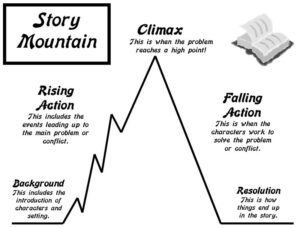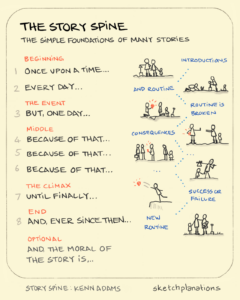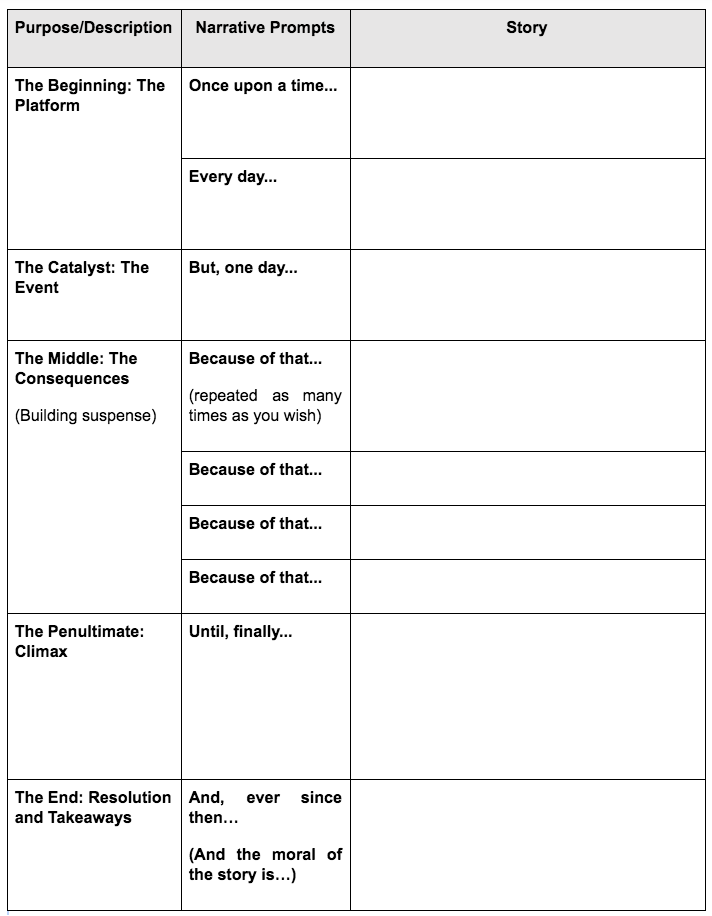Introduction
Stories come in many shapes and forms and can be as natural as retelling a past experience or as fantastical as imagining faraway worlds. In conjunction with the Malaysian National Story-Telling Competition 2020 happening on 22-23 February hosted by MIDP, I really dove into the mechanics behind a good story in class. There is actually a lot of intention and thought process that goes into building stories that are engaging and memorable.
This is because stories are prevalent in our daily consumption of information, from advertisements on YouTube to witness accounts in newspapers to the fairy tales parents tuck children into bed with. In marketing, stories allow consumers to connect with the brand. In entertainment, it becomes a form of escapism to viewers. In people, it makes us believe and root for their cause.
I believe great stories contain a good plot and well-developed characters. In the first installment of this series, we will look at how to create a great plot for storytelling speeches.
Plot
A story is more than its beginning and end. It is a carefully curated roller coaster ride with a slow rise in anticipation, a sudden yet thrilling climax, and the sheer satisfaction of an end. A ride was so exhilarating that it feels like the journey was over too soon, only for the fleeting moment to last a lifetime. This is how a good story should feel, a mix of suspense, thrill, and satisfaction – where the only regret is that the story is over to soon, despite the story changing you forever.
Combining the simple tried and tested technique of the classic, “Story Mountain” with narrative prompts from the “Story Spine”, I will go through the different stages of a good plot and explain how each element should be tackled when delivering a story.
But first,
A Story Mountain highlights the life of a story – its background, rising and falling action, climax and conclusion. Much like a roller coaster, any plot should look like this:
A Story Spine, introduced by playwright, Kenn Adams, consists of narrative prompts that help speakers create well-structured stories. Similar to a typical speech structure. These prompts look like this:
By combining both techniques, we have the following framework to work with:
1. The Beginning – The Balance
The beginning of the Plot sees us introducing the setting and characters of our story while answering some basic questions like, who are our characters? Where is the story based? When is this taking place? I call this the exposition phase where the audience is “told” of the world in which the story exists. This is the characters’ world in balance. Balance meaning their everyday life, their routine, before any conflict kicks in.
In a speech, the narrative prompts (in bold) and plot points for a story’s beginning will look like this:
“Once upon a time… there was an orphan girl named Cinderella.
And every day… she had to cook and clean for her evil stepmother and stepsisters.”
2. Conflict – The Un-balance
After establishing the character’s world in balance, there must be an “Inciting Incident” that breaks the routine, causing an imbalance, instigating the characters into action and kickstarting the story. It usually comes from a “change in circumstance” leading to a conflict, dilemma or difficulty, which then forces the characters to do, change or attain something in order to restore the original balance.
Further applying the Story Spine prompts, a simple Inciting Incident looks like this:
“But one day… The prince announced that there was going to be a ball where everyone was invited to attend.”
3. The Rising Action – Consequences
This is where the bulk of the story will exist, similar to the increase in suspense you feel on a roller coaster ride as you slowly make your way to the top, your stomach dropping, your heart beating like a drum. At this stage, the audience is told of the consequences of having the characters’ lives thrown out of balance. This is where the audience follows the characters’ pursuit of their goals – the quest for a resolution.
The story’s rising action should build on events that would logically follow one after the other with careful effort being put into building suspense and tension, creating the setting for a climax that would build into a crescendo. This is where various challenges are thrown, tension is built and foreshadowing is hinted.
For the middle part of the story, the narrative prompts, “Because of that…”, can be repeated as many times as necessary:
“Because of that… Cinderella hurried to finish her chores and make a dress for the ball.
Because of that… Cinderella’s stepmother got angry and ripped her dress prohibiting Cinderella from attending the ball, causing her to be devastated.
Because of that… Cinderella’s fairy godmother used magic to send Cinderella to the ball where she danced with the prince until the clock struck midnight.”
Because of that… Cinderella ran back home leaving one glass slipper behind which the prince used to find her the next day.”
4. The Climax – Tipping Point
This small yet significant part of the plot is absolutely instrumental in ensuring that the audience is left with sufficient satisfaction from the rising suspense, anticipation, and tension you had built from detailing the consequences of the “unbalance”.
This is typically where the characters reach the “point of no return”, where the conflict, dilemma or difficulty reaches a boiling point and the characters are changed for good. This is where the villain is defeated (or not defeated?), the quest is completed, the lovers are reunited or the truth is revealed. The triumph, the twist, the tragedy – all are exposed here.
In simple words:
“Until finally… her stepmother discovered Cinderella’s glass slipper and locked her in the storeroom only for her to escape with the help of her tiny friends and reunite with the prince.”
5. The Resolution – New Balance
Once the story has been told to the audience, the conclusion is intended to provide closure to the characters’ chapter. This is where the character’s world, post-climax, is explained – the new “normal” or “balance”. This is also typically where the lesson or “moral of the story” type narrative is placed.
To conclude the speech/story:
“And ever since that day… Cinderella lived happily ever after with the prince as his bride.
And the moral of the story is… you need a prince and fairy godmother to save you? (This can’t be right!)”



